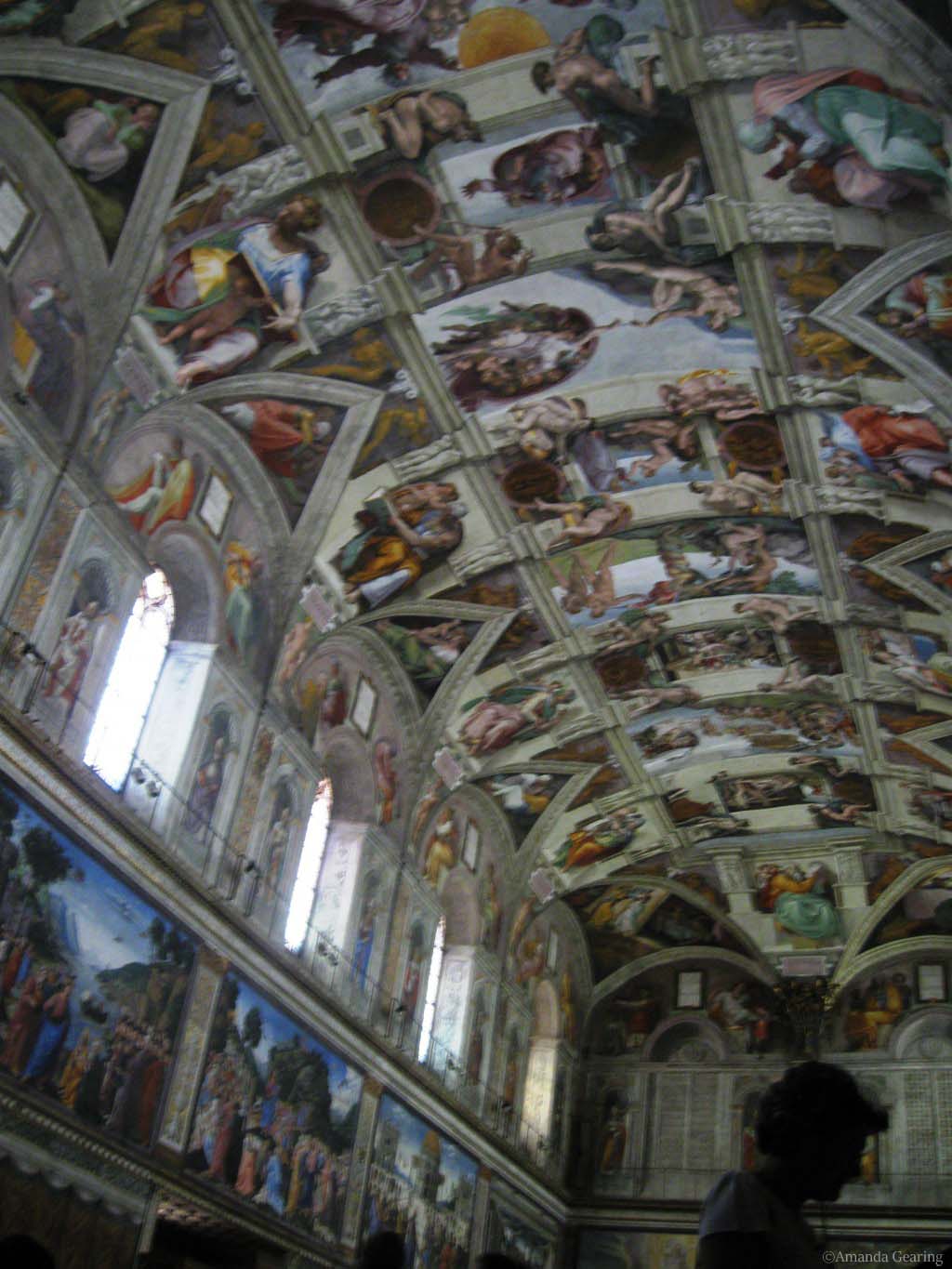Michelangelo’s masterpiece
Vatican City, Rome, Italy
The Sistine Chapel is a relatively small chapel (compared with the vastness of St Peter’s) set within the official residence of the Pope in Rome.
It is famous for its highly decorated domed ceiling, painted in the 1500s by the great Renaissance painter Michelangelo and many other artists.
Today, the Roman Catholic cardinals use this room when they meet as an enclave to select a new Pope.
The wall and ceiling frescoes each tell part of the story of the Old and New Testament, from Genesis to the Last Judgement.

History
The original chapel built in about the 1300s fell into disrepair but was restored in the 1400s under the orders of by Pope Sixtus IV.
The building is rectangular and quite plain on the outside. The upper storey is the same dimensions as laid down in the Old Testament for Solomon’s temple: 40.9m long and 13.4m wide.
The barrel-vaulted ceiling is 20.7m high, thus the room is much higher than it is wide, giving a feeling of grandness and directing the eyes upwards.
Once the building was completed, Pope Sixtus commissioned painters of the day to create the series of paintings around the walls depicting the life of Christ and portraits of Popes.
The chapel was named ‘Sistine’ after him. The ceiling was painted blue with gold stars, in dedication to the Virgin Mary.
Pope Julius II later asked Michelangelo to paint the ceiling with frescoes of the 12 apostles. The artist initially refused because he saw himself more as a sculpture than a painter but eventually he agreed – although he still refused to paint the 12 apostles.
The Pope agreed that Michelangelo could make his own choice of Biblical scenes for his paintings.
He designed 300 separate frescoes depicting stories from Genesis including the “Creation of Adam”, Adam and Eve in the Garden of Eden and the great flood.
The Creation of Adam in the centre of the ceiling is considered to be Michelangelo’s greatest work and one of the world’s most famous paintings.
Visiting the Sistine Chapel
Visitors to St Peter’s Cathedral often add a visit to the museums beside St Peter’s, wending their way through kilometres of museum displays to eventually reach the Sistine Chapel.
The museum has many fine collections of tapestries, sculptures, paintings and other artworks.
Allow several hours for this visit as it takes about an hour to walk through the one-way system of hallways and displays to reach the Sistine chapel.
The museum is not suitable for prams and wheelchairs as there are many sets of narrow steps.


Recent Comments